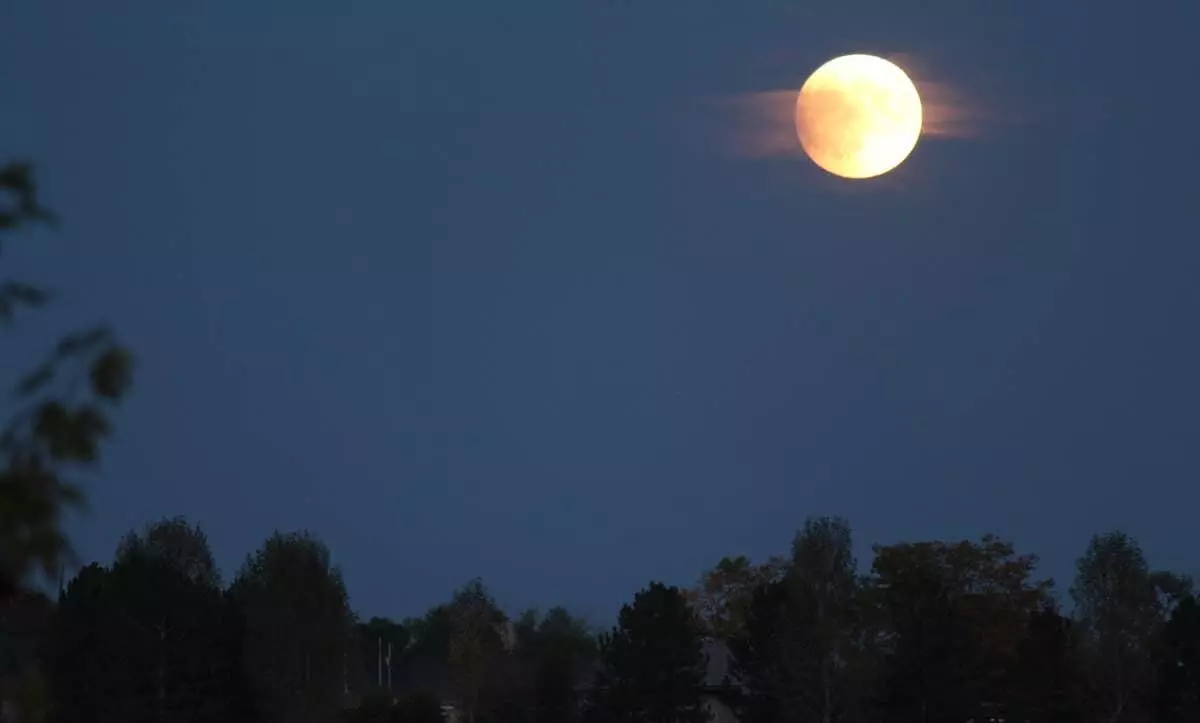Lunar eclipse on Nov 30; can't be seen by naked eye
Lunar eclipse, scientifically known as `Penumbral Lunar Eclipse’, will not be noticeable by the naked eyes.
By Newsmeter Network
Hyderabad: The fifth eclipse of the year will occur on November 30 from 1 pm to 5.26 pm.
Lunar eclipse, scientifically known as `Penumbral Lunar Eclipse', will not be noticeable by the naked eyes.
This is the fifth of six eclipses that will occur this year. Two solar eclipses were scheduled on June 21 and on December 14. Four lunar eclipses were scheduled on 10 January, 5 June, 5 July, and 30 November.
The solar eclipse on June 21 was visible in entire India that too on its partial phases, while the rest of the five eclipses of 2020 are unnoticeable or not visible.
November 30 lunar eclipse
According to N Raghunandan Kumar, Director of Planetary Society, India, the lunar eclipse will not be noticeable to naked eye because the Moon passes through lighter outer shadow (penumbra) of earth and no notable darkening can be witnessed.
He said if the Moon was to pass through darker shadow (umbra) of earth people in various parts of the world where the Moon was above horizon at Moonrise or close to Moonset, would have witnessed darkening of the Moon, the eclipse. However, during the Penumbral lunar eclipse, the Moon disk doesn't get darkened noticeably. Hence eclipse is not visible to naked eye though the phenomenon takes place.
Eclipse Rituals in India
The Planetary Society, India said that they have observed historically or generally the Umbra phase is considered as an actual eclipse by the general public to follow various rituals and traditions since ages.
Whereas the unnoticeable Penumbra passage of moon from earth's lighter shadow without any darkening of the Moon was never considered.
"A penumbral eclipse of the Moon is not to be taken as an eclipse of the Moon in the ordinary sense, as the Moon is not covered by the real shadow of the Earth during such an eclipse," said Positional Astronomy Center, IMD, Ministry of Earth Sciences, Government of India.
"However, scientifically speaking all lunar eclipses begin and end with the moon entering and leaving the penumbra (lighter outer shadow of the earth)," said N Raghunandan Kumar.
Can eclipse be visible to the naked eye?
On November 30, 2020, had the moon passed from the darker shadow of the earth, people in Northernmost places of India like Ladakh and North-eastern states would have witnessed the eclipse at moonrise time. Whereas the rest of the world except Africa and Europe would have got the opportunity to see the eclipse at Moonrise or Moonset